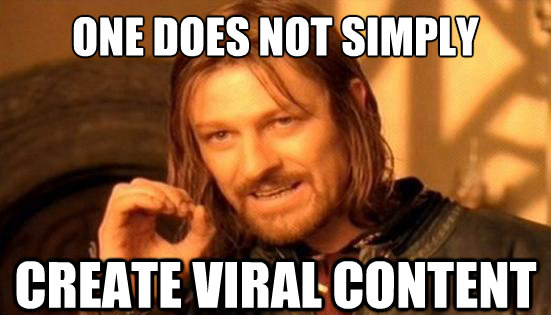
Content that sparks emotion is the single biggest difference between content that gets shared and content that doesn’t. Every day there are thousands of photos, videos, blog posts and infographics shared across the web. While some people may feel their content is just as good as the next guy, that’s far from the truth. All content is not created equal.
The difference between the picture that goes viral on Facebook and the one that solely gets a like from your mom is typically related to the emotion that image stirs up in people. Media channels like Buzzfeed, Business Insider, TechCrunch and even CNN, understand the value of emotion and put effort in finding and delivering stories that drive it. Businesses need to do the same.
According to a study called “Social Transmission, Emotion, and the Virality of Online Content”, from the Wharton Business School, there is a strong relationship between emotion and virility. They looked at thousands of articles and pieces of content and specifically tracked what similarities could be found in the “most emailed” list of content. The similarities were directly linked to emotion.
Take the success of Google Chromes ‘Dear Sophie’ ad, which showcased the story of a father sending emails to his daughter from the day she was born until the day she got married. The story sparks a wave of emotion and quickly became a YouTube viral sensation because people could connect with it on an emotional level. A similar emotional rollercoaster set in when millions of people watched the KONY 2012 video that became the fastest video ever to reach 100 million views.
What we see in both the Dear Sophie and KONY 2012 videos, is that feeling drives sharing. In Dear Sophie it’s the emotion of happiness, joy and nostalgia that makes us want to share it with our friends while with KONY it’s a sense of anger, sadness and motivation to make change. Two very different videos driving two very different emotions.
There are two key emotions that brands should consider activating when striving to go viral. Anger and Joy. Emotions like disgust, fear and sadness should be avoided as they are more difficult to integrate effectively with a brand story and spark sharing.
Use Anger to Make Viral Content
Sparking frustration or anger is an easy way to stir up engagement with people. It’s a tactic that is extremely powerful but needs to be done with tact or you can risk damaging your brand or credibility. Strive not to create content that stirs up hostility but instead strive to challenge the status quo and standard thinking with something that will drive disagreement.
Tucker Max has become a pro at driving virility through stories and antics that get people angry. While Tucker Max may already have a brand that goes well with this approach, boring brands can use emotion to develop viral content marketing efforts as well. Taking a contrarian approach to a topic or subject is an easy way to grab the attention of your target audience.
An example of a post that goes against traditional thinking is the controversial post from Chris Brogan where he proclaimed he wasn’t down with Twitter lists. The post drove more than 100 comments and sparked a significant level of engagement. This idea of being controversial is the same approach used by The Onion when they launch products like “I kissed a Republican” bubblegum.
Using Happiness & Joy to Create Viral Content
While I’m sorry to burst the bubble of any Debbie Downers, positive, inspirational and uplifting content was show to always drive more virility than negative stories. People like to feel good. Furthermore, they like to be the reason other people smile and have a sense of Joy from giving it to others.
If your content can make people laugh, or simply smile at their computer screen, there is an increased chance that your content will be shared. It’s this emotion that drives people to spend hours on top of hours reading blog posts filled with inspirational quotes. It’s this emotion that made viral sensations like the Old Spice Guy or the Harlem Shake reach millions of people in the matter of days.
Making someone smile or feel good about themselves is a great way to drive sharing. It’s not only an easy way to drive sharing but it’s also a good way to build a positive brand association with your target audience. The entire Coca-Cola brand story is built on the idea of Happiness which allows them to constantly strive to spark this emotion and ultimately create stories worth sharing.
The next time you write a blog post, think about how you can stir up joy or anger. I don’t share these tips without being aware of the dangers associated with playing with emotions. Thus, I encourage you to use this knowledge responsibly. Use it to better connect with your audience and spread a story that is unique and compelling.
If you can use emotion effectively, you will start to see results. Your page views will increase, your sales will surge and your customers will express how much they love your brand and what it represents.
Want more insights on content marketing? I’m writing a Guide to Content Marketing where I’ll be sharing insights like these about emotion and diving deeper into a handful of tips and tricks that will help take your content marketing efforts to the next level. Sign up today for updates regarding launch and other developments.
What brands have you seen use emotion in their marketing efforts?
